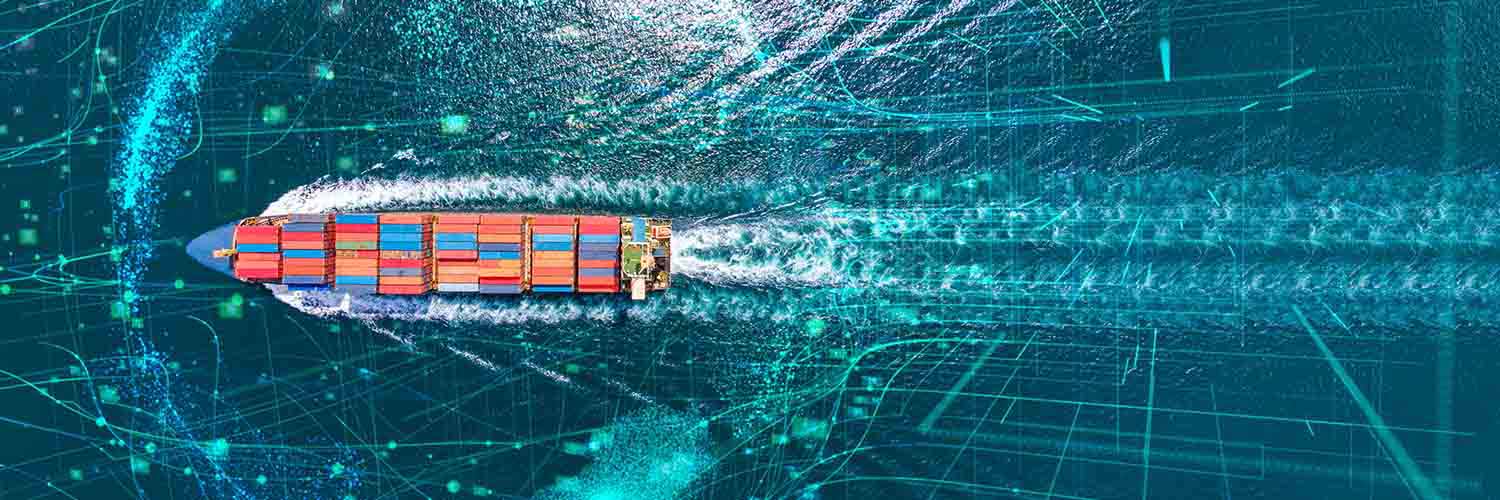Technology and Innovation in Ocean Freight
Technological advancement is transforming every
sector, and the ocean freight industry is no exception. The marine business is
embracing digitization and technological innovations, creating a ripple effect
in the entire supply chain.
Not just the collaboration and communication
tools but other smart solutions for digital tracking of ships and cargo are
also playing a role in increasing efficiency. Implementing the latest
technology cuts down cost and helps in achieving sustainability goals, enabling
firms to adopt safer, greener, and more competitive solutions.
Let’s dive deep to understand which
technological innovations are revolutionizing ocean
freight:
Robotic Technology
With benefits like greater efficiency and risk
mitigation, robotic technology plays a significant role in ocean freight.
One example is the use of automated cranes at
the port. Using these cranes increases productivity, besides reducing the risk
of accidents. Similarly, the technology performs multiple other roles. Whether
related to cargo loading and unloading or container handling, automation
through robots is transforming various operations.
Also, in the research process, the technological
contribution is commendable. Underwater gliders are widely used as they provide
information related to environmental parameters and help make sound decisions.
Likewise, Remotely Operated Vehicles (ROVs) assist in studying the ocean by
going deep down when diving by humans is dangerous or impractical.
Robotic technology automates many hazardous and
monotonous tasks, which are difficult for a human being, providing ease and
time-saving. Industrial robots are already in use; they can pack, stack, and
even inspect products without human intervention.
That is how robots provide a solution to labor
shortages and enable countries to address the demand for global trade.
Internet of Things (IoT)
The Internet of Things (IoT) provides multiple
benefits to the ocean freight industry. It offers real-time tracking, enabling
shipping companies to take quick decisions and ensure product safety. For
instance, sensors can alert professionals in case of abnormal weather
conditions and other potential hazards. It provides the safe transfer of perishable
items and pharmaceutical products, besides ensuring on-time deliveries.
Additionally, the integration of IoT in smart
containers provides information about fuel consumption, speed, and other
factors that help in creating on-the-spot strategies, which in turn minimizes
the cost of damage and helps earn consumer trust.
Besides this, video surveillance backed with IoT
helps continuously monitor the vessels. It highlights the unsafe working
conditions and provides the benefit of remote video footage to the compliance
officers. Due to this, auditors can suggest areas of improvement and increase
efficiency.
Augmented Reality (AR)
Providing a realistic experience to new workers
is no more difficult when you can use Augmented Reality. It can help employees
get real-world experience and perform better. AR is widely used in ocean
freight to train new workers for multiple roles like cargo handling and
emergency operations.
Furthermore, AR assists in order stacking and
weight distribution by visualizing the physical container. It also plays a
vital role in collaborating the off-site experts with the on-site team. The
experts can feel the real scenario and suggest suitable solutions to
challenging situations.
Block Chain
Another technological trend that is reviving the
maritime business is blockchain technology. It is based on a decentralized
approach where information is updated instantly, and all users can get
real-time data without any delays.
Through this technology, shipping companies can
record every transaction and update stakeholders accordingly. Since it enables
real-time tracking and information is equally shared with all workers, it helps
in taking quick decisions in case of cancelled orders, unpredictable weather
conditions, cargo loss, and other emergencies.
The technology has also enabled the digitization
of the B/L form, which contains all the information required for the shipment
process. Thankfully, digital B/L has successfully resolved the concern of theft
and delays in B/L, providing a smooth and efficient solution.
Blockchain has also given rise to smart
contracts. The reason behind it was the payment delays and the time required
for bank transactions. These contracts are associated with a technology that
automatically releases payment upon project completion. Moreover, no problem is
associated with exchange rate fluctuations.
Cloud Computing
Shipping companies deal with large volumes of
data. Storing information in a safe and reliable place is essential, be it
cargo-related information or a stakeholder profile, financial transaction, or strategic
data.
Cloud computing resolves this concern. It
fulfills the storage needs and enables us to offer data sharing among
stakeholders. The availability of collaborative tools also makes data sharing
easier than ever, further assisting decision-making and increasing
efficiency.
Moreover, it mitigates the risk of data theft
when regular backups are maintained. However, taking appropriate steps for
cybersecurity is essential to keep the data secure.
Predictive Analytics
As mentioned above, the shipping industry
gathers large amounts of data. Apart from storage, the analysis of this data is
equally important.
Technology has gifted us a wide range of tools
to study the trends in data. The tools can make an analysis, create models, and
suggest ideas based on the given data. Ocean freight companies can use such
tools for various purposes. They can determine the demand for a specific route,
find the safest routes, know the chances of port congestion, etc. However, the
choice of the tool depends on the specific needs of the company.
Wrapping It Up
From the above points, it is evident how technology is reshaping ocean freight operations. Dynamic Logistics is embracing such technological revolutions to bring automation, speed up deliveries, and minimize the risk of loss. Amalgamation of all these efforts will help us provide an unmatched ocean freight service, earn consumer trust, and remain competitive in the growing shipping market.



















